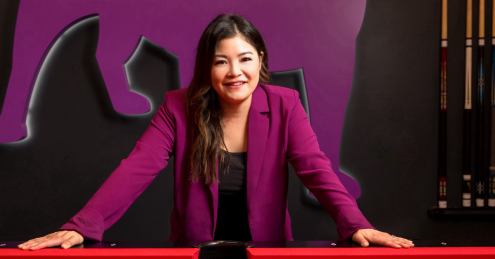Q&A with Robert
This Q&A reflects Robert 's time as Head of Growth at WildCard Games. Currently, Robert is Growth Marketing Consultant at Scopely.
Robert was first featured as a Mobile Hero in 2018. At the time, Robert managed user acquisition at Nexon M for nearly 3 years. Since then, he dabbled in growth for gaming blockchain. Robert now heads up the growth team at WildCard Games. We caught up with Robert about his best practices and how he is growing the UA crew at WildCard Games.
Read Robert 's latest article: "What I Learned Marketing Gaming Apps Developed in APAC"
What have you been up to since you were first featured as a Mobile Hero? How has your career progressed?
Since then, I have shifted away from a narrow focus on user acquisition. Now I think holistically about app monetization and marketing in the current competitive industry environment.
The app marketing industry has evolved in many ways since you first entered it. Taking a step back, what is something you find interesting or notable about the industry?
Deterministic Attribution might have been the best idea to ever come out of the mobile app ecosystem. Unfortunately, it has become clear that the privacy concerns with this model of direct attribution. I am interested in seeing how things grow and adapt in this period of intense uncertainty, and I am quite confident that Google will not make errors quite so significant as those that occur in SKAN.
What do you see as the next big thing in mobile marketing?
This is a tricky question to answer. I think the end of the pandemic represents an opportunity for social change. Privacy concerns are top-of-mind, but there’s no reason why privacy regulations can’t work in tandem with economic incentives. I hope—and expect—to see our industry innovate to tackle these challenges.
If you could go back in time and give yourself 1 piece of advice when you first started working in mobile, what would you tell yourself?
My advice would be to look to a platform model instead of a content creator model. There are a lot of products and services that would never have survived if they relied only on their creativity. Instead, they’re thriving because they provide a platform for other companies to gain an audience.
What’s the most effective messaging you’ve seen work for your user acquisition efforts?
The truth? User acquisition is about finding your audience. Messaging is only as effective as the situation and the timing of the message. You can do this most effectively in more insular communities like gaming, where people are focused on their shared interests and are therefore more open to themed messages.
What's a mistake you see get made all the time with UA strategies, even by smart people and smart companies?
There are a lot of approaches that focus on the narrow, deep funnel return profile. However, there are two critical components of LTV, retention and monetization. Overall, the challenge is needing retention to ensure that there are users to potentially monetize. Many approaches keep their focus narrow on increasing monetization without creating deeper effects on retention. This misses the mark. It also causes issues with algorithms training on user data signals.
Let's talk ad creative. Can you offer an insight or two you've gained from conducting your own creative tests?
Oh boy. I have run quite a few creative tests. Incumbency bias is real, and it’s a major challenge that cannot be underestimated. A/B testing tools were developed largely by people who believe machine learning has all the answers when it comes to determining creative effectiveness. However, there is concern that networks focused on revenue are not incentivized to discover new opportunities—because they’re not yet revenue optimal. Unless you conduct strict A/B testing, most of the time, the campaign will favor the most cost-effective asset, consistently placing that one in front of your audience.
This presents a distinct challenge that all networks will solve differently. The hard part is not determining a creative champion on day one of a campaign. I feel like I’m far enough on the other side of the Dunning-Kruger scale when it comes to creative testing. The main insight I can offer is that it is a tricky, multivariate data challenge and that you should find the process that makes your art team happy.
With WFH as the new norm, and all live events and in-person meetings virtual, what are you doing to stay connected and in touch?
Trying not to lose my mind. I joined WildCard Games partially because it was a hybrid office environment and not fully remote. I am not unable to work from home, but there are certain tasks that benefit from collaborating in person.






















